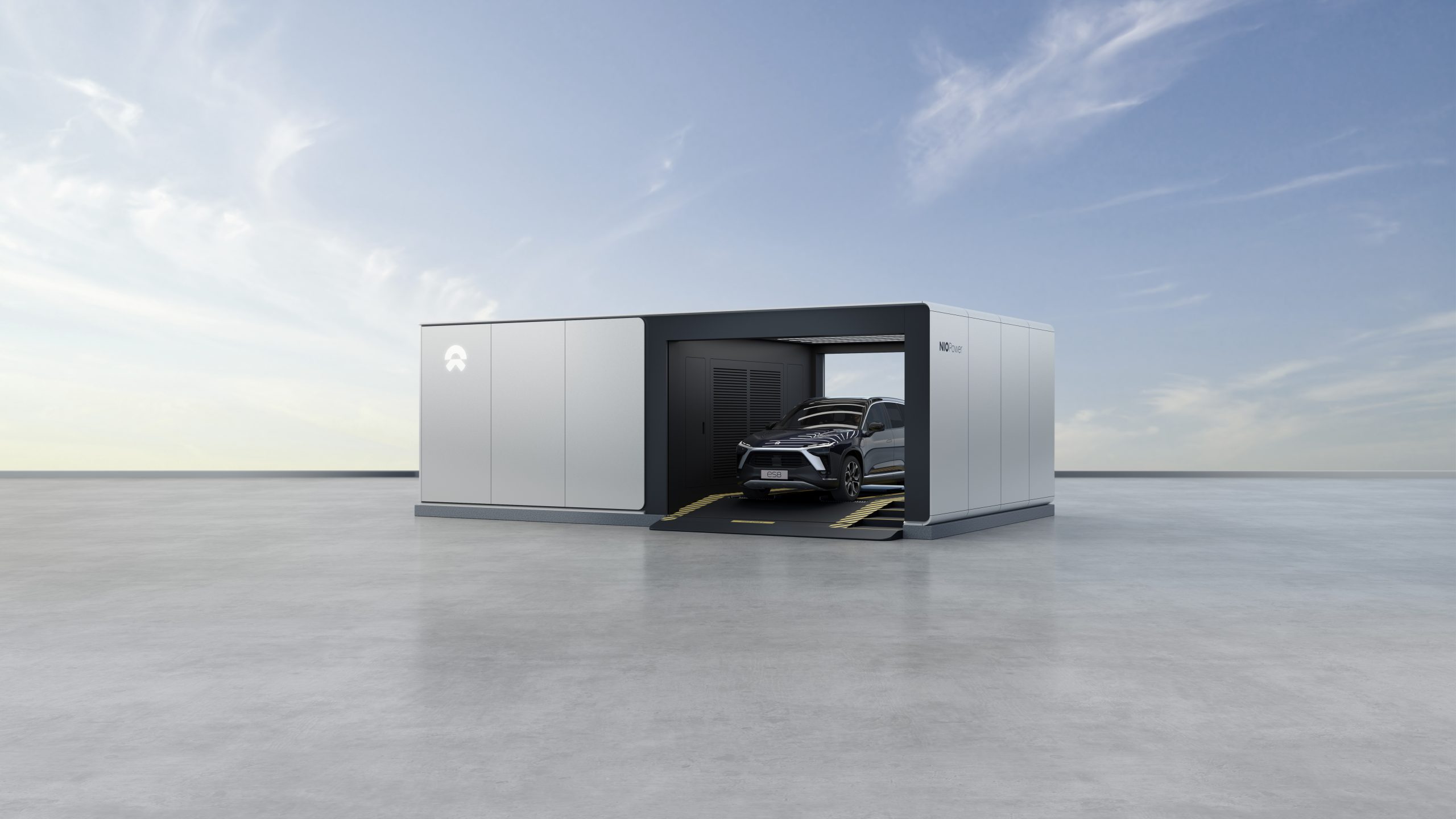 Leere gegen volle Akkus tauschen: Batteriewechselstation von NIO. Foto: NIO
Leere gegen volle Akkus tauschen: Batteriewechselstation von NIO. Foto: NIO
A joint research project of the Institute for Power Electronics and Electrical Drives (ISEA) at RWTH Aachen University and the Institute for Ecological Economy Research (IÖW) is looking at the vehicle component that is critical for raw material and energy consumption: the traction battery. In the “KreislaufAkkus” project, the scientists are comparing exchangeable battery systems with fully integrated battery systems, i.e. those with permanently installed batteries. Which is better for the environment and acceptance – charging stations, with which all electric vehicles are charged decentrally, or electric “filling stations”, where empty batteries are exchanged for full ones? In the project funded by the Federal Ministry of Economics and Technology and the Federal Ministry for Climate Protection, the researchers are evaluating the ecological impact and cycle properties as well as social and economic aspects of the various charging infrastructures.
Keeping battery raw materials in the cycle
“Batteries are made from valuable resources. Therefore, it is highly relevant to use the resources efficiently, to keep components in the system for a long time and to return the raw materials to the cycle through recycling after use,” says energy expert Jan Wiesenthal from the IÖW. This means that further use or reuse is considered in all phases of the battery’s life and batteries are already designed accordingly during production. “The market for electric vehicles will grow strongly in the coming years. Therefore, answers are needed now to the question of which battery system best fits the pressing goals of the energy and resource turnaround. Because this will result in fundamental directional decisions for the development of the charging infrastructure.”
Fixed batteries in vogue
Currently, the focus in e-mobility is on fully integrated batteries that are charged in the vehicle at charging stations. However, not all obstacles that hinder the rapid growth of the market for electric vehicles have been clarified yet. How, for example, can interdependencies be resolved between the economic viability of installing charging points and the number of e-vehicles on the road? How can high-density cities with limited space guarantee a sufficient supply of public charging stations so that people without their own charging station are also willing to switch to an electric vehicle? Drivers also continue to have concerns about range and charging speed, and concepts are needed to prevent the electricity grid from being overloaded by simultaneous and rapid charging.
Rechargeable batteries: the missing link in the mobility revolution?
For some years now, exchangeable batteries have been considered a possible solution. Unlike permanently installed batteries, these can be removed in a short time and replaced with fully charged batteries. For the users, this has the advantage that it is quick. Charging time and actual use of the vehicle can be decoupled from each other, thus reducing the load on the electricity grid. Replaceable batteries can also have a positive effect on resource efficiency, because their service life could be increased through controlled and more gentle charging. The service life of the vehicles would also become independent of that of the battery. However, central questions such as the required number of batteries, vehicle design requirements and standardisation necessities are still unresolved. In addition, this approach requires more vehicle batteries throughout the system to be available for replacement.
Efficient battery systems: Creating the scientific basis now
In order for industry and politics to be able to make these groundbreaking decisions, scientifically based orientation knowledge must now be created that shows how the raw materials of rechargeable batteries can be managed in a resource cycle and how the systems must be designed for this. Possible framework conditions for different battery systems must also be developed so that strategic discussions about permanently installed batteries versus exchange systems are made possible in the first place. For this purpose, the project “KreislaufAkkus” compares and evaluates fully integrated and exchangeable battery systems with regard to their ecological effects, resource intensity and cycle properties as well as technical and economic feasibility with close involvement of practical actors and under consideration of social aspects.
This is an article by Richard Harnisch, Institut für ökologische Wirtschaftsforschung GmbH (www.ioew.de; www.isea.rwth-aachen.de), which can also be read in the current eMove360° magazine in german language. Order a free downloadable PDF or print version by sending an e-mail to sabine.metzger@emove360.com.